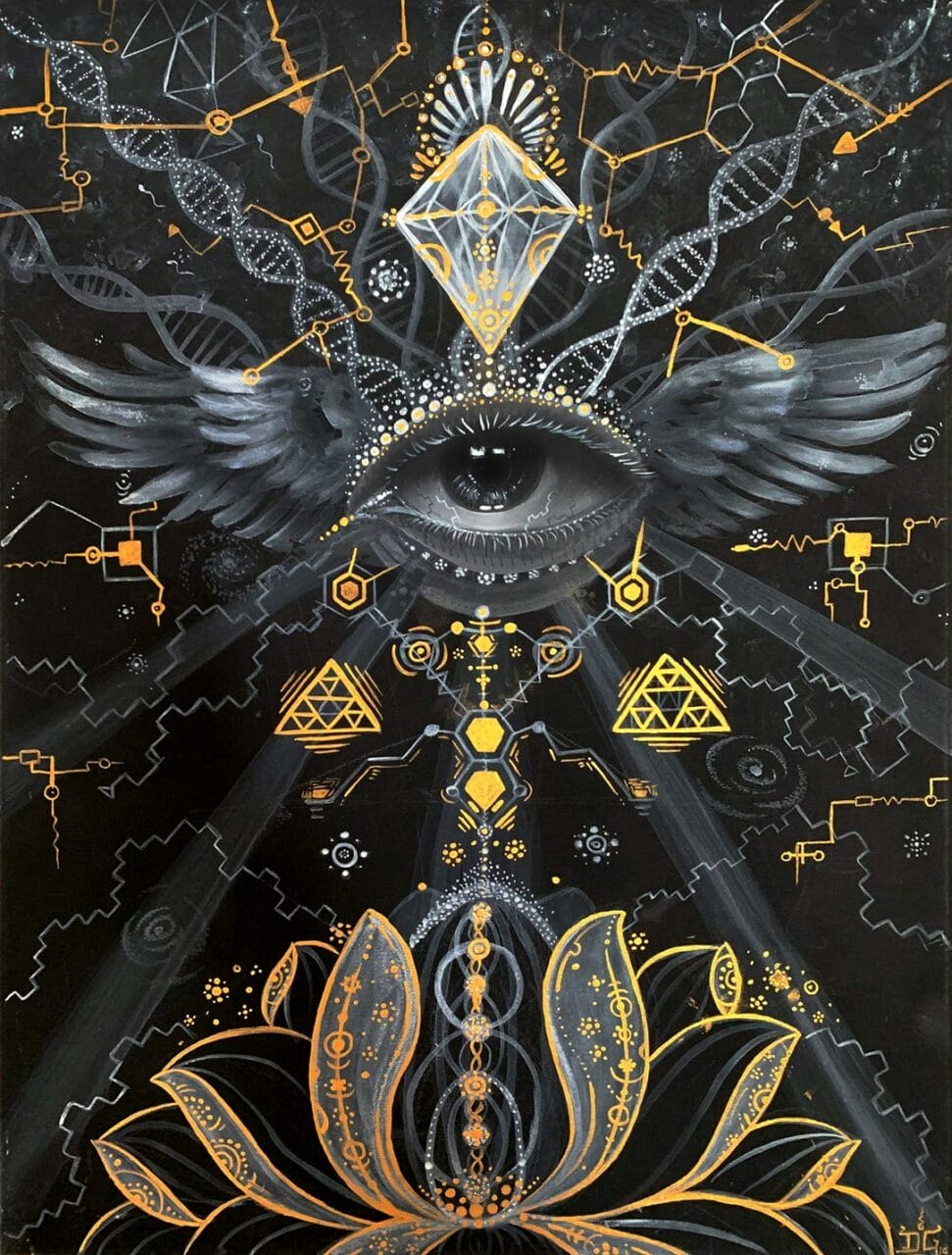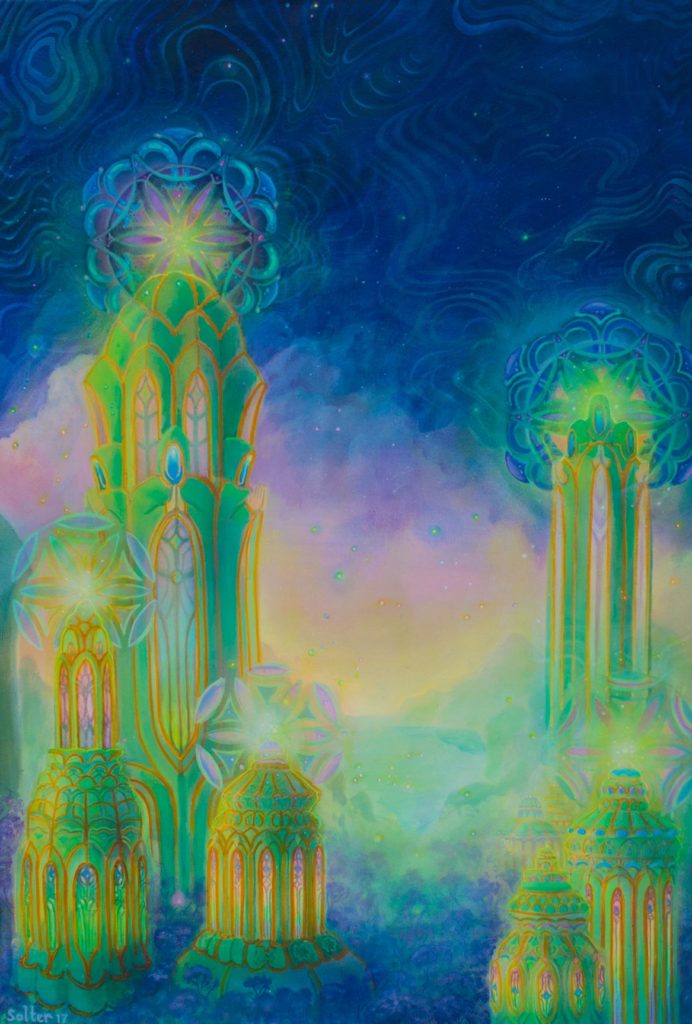
© Uni Kaya
The Historical Journey of Psilocybin Mushrooms
Psilocybin Mushrooms, a unique type of mushroom with more than 200 species, has a history that can be traced back to 9000 BC according to historical records. These mushrooms contain psilocybin, a compound known for its hallucinogenic properties, which can cause altered perception, auditory and visual hallucinations, and profound spiritual experiences. For thousands of years, these mushrooms have been used in various spiritual ceremonies, rituals, and practices across a diverse range of cultures and tribes. Notably, many of these historical uses originate from North and South America.
Psilocybin Mushrooms in Ancient Times
Various cultures have used natural psychedelics throughout history. For instance, evidence from the Sahara Desert suggests that humans were using Psilocybe Cubensis over 7000 years ago. Archaeological finds suggest that this intoxicating substance is depicted in prehistoric art in various regions. The indigenous tribes of the Sahara in North Africa, for example, illustrated its use in their paintings around 9000 BC. The Selva Pascuala mural rock painting in Spain, which is approximately 6000 years old, indicates the use of Psilocybe Hispanica in religious ceremonies. The influence of these substances on cultural evolution, religion, art, societal norms, and everyday life is increasingly recognized. This substance has unquestionably left a deep mark on our culture and society.
Historical Overview of Psilocybin Mushrooms Use
In the past,Psilocybin Mushrooms have been consumed for a long period. The psychoactive substance we know today has been used over many centuries, with diverse practices regarding its usage. Isn’t it time to appreciate nature’s gifts? It’s an opportune moment for Magic Mushrooms Vancouver Canada to delve into the historical journey that has shaped the status of Psilocybin Mushrooms today.
Key Takeaways
- Historically, dried Psilocybin Mushrooms have been used in traditional rituals and spiritual healing. Nowadays, it is used as a treatment for mental health disorders.
- Psilocybin Mushrooms played a significant role in the hippie culture and propelled the psychedelic revolution, encouraging its recreational use.
- Key figures such as Wasson, Sabina, and McKenna introduced psilocybin to the contemporary world.

© Jonathan Solter
Endorsing the Stoned Ape Theory
Terence McKenna brought forth the Stoned Ape Hypothesis, suggesting that psilocybin might have contributed to human evolution, especially in terms of cognitive development. Although it has faced some backlash, the intriguing nature of this theory remains undebatable.
Ancient Societies and Sacred Rituals
Historical communities depicted cubes in symbols, artwork, and statues, indicating the ceremonial use of Psilocybin Mushrooms. The Mayans and Aztecs used it for interacting with supernatural beings, including gods. Within the culturally rich Aztec society, it was termed “teonanácatl“, which means “flesh of the gods”. The concept of a psychedelic experience was alien to them, leading them to view it as a divine entity. Moving north to Siberia, hallucinogenic Psilocybin Mushrooms were employed by Siberian shamans. They specifically utilized the hallucinogenic substance (Psilocybin Mushrooms) known as “Amanita Muscaria” for spiritual healing and customary practices, despite its poisonous nature. This usage dates back to about ten thousand years ago. In African tribal rituals, specifically among the Congo and Zimbabwean tribes, cubes were utilized for communicating with ancestors, to stimulate visions, and promote spiritual healing. These historical societies contribute to the understanding of contemporary psilocybin use. The reverence for this substance in these cultures originated from its divine connotation and its ability to trigger mystical experiences.
Psilocybin Mushrooms in Myth and Folklore
Numerous accounts, including those from Gordon Wasson, have highlighted the connection between Psilocybin Mushrooms and the spiritual world, emphasizing its role in folklore and mythology as a medium for divine communication and enlightenment. In ancient India, the Soma—a ceremonial potion mentioned in the Vedas—was thought to induce altered states of consciousness. Scholars like Wasson speculate that it might have been derived from psychoactive plants, specifically fly agaric. Some even suggest that this ancient drink may have contained a mixture of various plants. Regardless of its origins, the psychedelic history suggests that Soma facilitated the appearance of sacred symbols during rituals, signifying a portal to higher wisdom or spiritual enlightenment.
The Modern Era
An Overview of the
Origins
Historical documents from the era before Columbus’s arrival suggest that Mayans and Aztecs utilized psilocybin Psilocybin Mushrooms. In the 15th and 16th centuries, Spanish rulers labeled its use as uncivilized and thus, prohibited it. Despite the ban, shamans secretly continued to use magic Psilocybin Mushrooms, upholding their cultural traditions for over 400 years.
Revival in the West
The 1950s saw the re-emergence of these substances in the Western world, propelled by the innovative work of pioneers such as R. Gordon Wasson, Roger Heim, and Albert Hofmann. During their journey to Mexico, they successfully isolated the two psychedelic components (psilocybin and psilocin) from the Psilocybin Mushrooms obtained from the Mazatec tribe. Wasson later shared his discoveries, uses, and insights about magic Psilocybin Mushrooms in Life magazine. His written pieces and personal narratives led to the public recognition of the substance as a potent hallucinogenic. By the advent of the 1960s, the substance had become a symbol of the Hippie movement and was seen as a portal to spiritual enlightenment. Nevertheless, its usage also provoked considerable debate and spearheaded a cultural shift in the recreational use of hallucinogenic substances.
Further Progress: Worldwide Prohibition
In 1971, psilocybin was classified as a Schedule 1 illegal substance by the United Nations Convention on Psychotropic Substances, along with Lysergic Acid Diethylamide and N, N-Dimethyltryptamine. They were all considered to have no medicinal value and a high risk of misuse. This resulted in widespread criminalization in Western nations, like Canada and the U.S., severely limiting the spiritual and therapeutic uses of the substance.
The Modern Resurgence of Psilocybin
Lately, there’s been a softening of the strict laws around the use of psilocybin, starting with its decriminalization. This shift aligns with the UN’s provision for member nations to regulate the substance as they see fit. At the same time, a growing body of research and clinical trials on psychedelics and consciousness strongly suggests potential medicinal uses for psilocybin. A 2021 study exploring the therapeutic use of psychedelics indicated that the 1970 prohibition significantly hampered further research. However, an initial study in 2004 revived interest in psilocybin, suggesting potential uses in neuropsychiatry, specifically for treating mental health conditions such as:
- Depression, Anxiety, and Stress
- Post-traumatic Stress Disorder (PTSD)
- Obsessive-compulsive Disorder (OCD)
- Drug Abuse (Aiding in Addiction Recovery)
- Excessive Consumption of Alcohol and Drugs)
The Influence of Media and Art
The conversation around psychedelic cubes has expanded to such an extent that they are now represented in various forms. The public’s interest in these substances has been rekindled through diverse media, art, and literature. Movies like “Fantastic Fungi” by Director Louie Schwartzberg, and documentaries examining their therapeutic potential, have enhanced public understanding of their mental and physical effects. Michael Pollan, the author of “How to Change Your Mind,” has investigated the use of psychedelics for mental health and spiritual growth, reviving interest in their societal and therapeutic value.
Prominent Historical Advocates of Fungi
- María Sabina: Sabina, a Mazatec shaman and poet from Mexico, played a role in introducing cubes to the Western world. She allowed Wasson to observe her Psilocybin Mushrooms rituals.
- Gordon Wasson: Wasson, a writer, is credited with bringing worldwide awareness to the drug. His comprehensive recounting of his experiences with Sabina enhanced the understanding of its indigenous use.
- Terence McKenna: A leading proponent of psychedelics, McKenna was instrumental in emphasizing their cultural and philosophical significance. Through his speeches, writings, and research, he popularized the “Stoned Ape” theory, portraying it as a cognitive enhancement tool that impacted society.
The Timeline – A Concise Overview
with TRD.
| Prehistoric | Prehistoric use is depicted by stone art discovered in the Sahara, Africa |
| Ancient | The Maya and Aztec civilizations incorporated the use of teonanácatl in their religious and spiritual rites. |
| 16th Century | Usage fell out of favour due to its association with Indigenous beliefs |
| 18th Century | In 1799, the drug’s “intoxicating” effects were noted when four children inadvertently ingested Psilocybe Semilanceata, highlighting the potential negative outcomes of its use. |
| 20th Century | The drug was introduced to the Western world by Wasson and Sabina, sparking a psychedelic revolution among the hippies. The UN legalized the possession and usage of the substance. |
| 21st Century | Clinical studies to verify its medicinal potential are increasing. A Special Access Program for its use has been authorized by Health Canada. |
The Emergence of the Psychedelic Era and Beyond Redemption | Purchase Psilocybin Mushrooms Online at Magic Mushrooms Vancouver Canada
Supported by rigorous scientific studies, the consistent use of cubes at Magic Mushrooms Vancouver Canada is set to expand until they reach worldwide acknowledgment. Our online Psilocybin Mushrooms store at Magic Mushrooms Vancouver Canada is primed to assist this evolution. Our extensive product range attracts customers, inspiring them to undertake the enigmatic and therapeutic journey of psilocybin. Secure your preferred items from Zoomies today.
Commonly Asked Questions
No, Amanita Muscaria does not contain the active compounds found in Psilocybe Cubensis. Rather, the psychoactive substances in fly agaric are muscimol and ibotenic acid. A prevalent theory about Soma’s origin proposes that it is a combination of various psychoactive plants. Similarly, ayahuasca is a mind-altering drink. However, the only commonality between the two is the perception of soma as an analogue of ayahuasca. After it was classified as a toxic Psilocybin Mushrooms, it was examined for potential Psilocybin Mushrooms poisoning. Today, it is recognized as the Psilocybe Mexicana.

